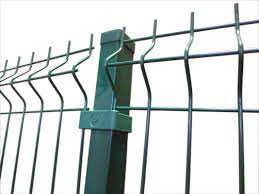
Flourish and Flow: Organic Fence Art
In age quick advancement and broadening urbanization, the construction of fences (ploty) has come about being a essential consideration for strengthening system with ecological dependability. As societies seek to protected property limitations, safeguard natural environments, and control property use, the adoption of environmentally friendly fencing practices has become vital in mitigating environmental affects although getting together with social requirements.
Main to the thought of eco friendly fencing is the acknowledgement that traditional approaches can inadvertently cause harm to ecosystems. Standard resources like dealt with timber or galvanized steel, while durable, could leach dangerous chemicals in to the earth or waterways, posing risks to wild animals and individual well being. Additionally, the indiscriminate position of fences can fragment habitats, affect animals corridors, and impede natural movements of types.
To deal with these challenges, eco friendly fencing stresses the use of eco-pleasant materials and design tactics that reduce environment harm. Bamboo, for example, has become popular being a replenishable option to traditional wooden fencing, boasting fast progress rates and minimal environmental footprint. In the same way, reused plastic-type composites offer you sturdiness without the environment drawbacks of virgin plastics or aluminum alloys.
Moreover, tactical positioning and considerate design and style functions can boost the ecological functionality of fences. By incorporating wild animals passages, such as culverts or step ladder-like components, fences can facilitate the activity of wildlife across fragmented countryside, endorsing hereditary connectivity and varieties resilience. Similarly, permeable obstacles provide for the passage of tiny mammals, amphibians, and advantageous pesky insects whilst still keeping stability targets.
In agricultural contexts, eco friendly fencing techniques align with concepts of regenerative terrain administration. Electric fencing, as an illustration, makes it possible for versatile rotational grazing systems that mirror organic grazing patterns, endorsing earth health, biodiversity, and co2 sequestration. Moreover, adding residing fences made up of indigenous shrubs or grasses improves environment connectivity and offers ecosystem solutions like erosion manage and wild animals environment.
By adopting eco friendly fencing alternatives, system jobs can harmonize man needs with ecological imperatives, cultivating sturdy panoramas for generations to come. Via creativity, collaboration, as well as a dedication to stewardship, we can easily build restrictions that not only safeguard residence and also preserve the wealthy tapestry of life on our world.